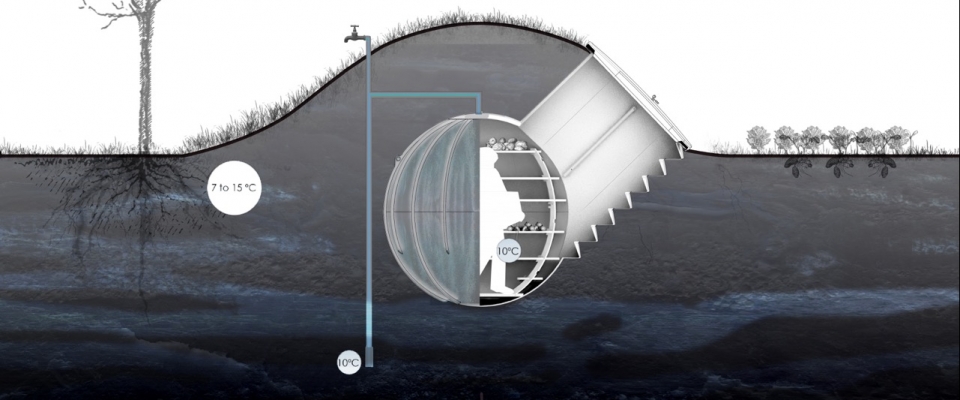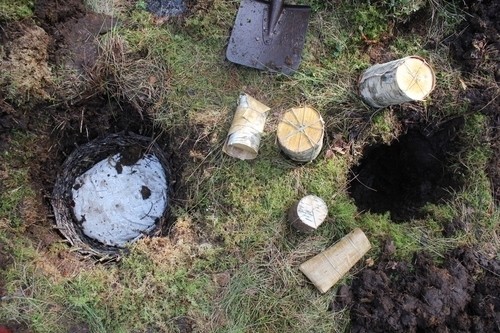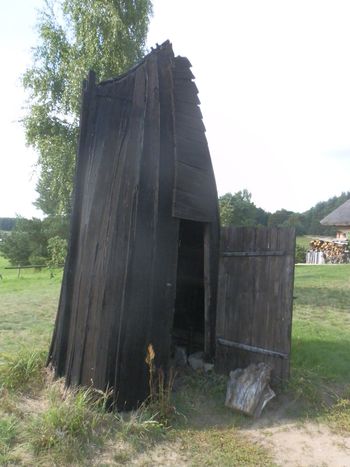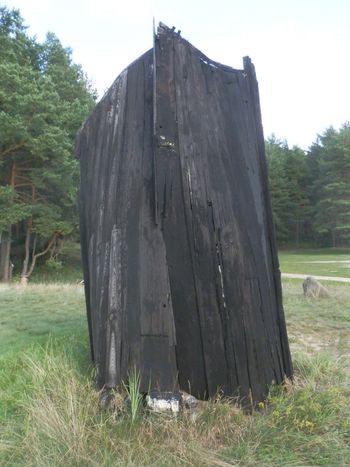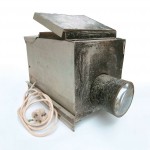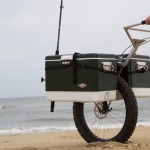The Groundfridge is an innovative take on the traditional root cellar. Via Treehugger.
Bog Butter: Storing Food in Soil
“Bog butter is butter that has been buried in a peat bog. Over 430 instances of bog butter have been recorded. Of these, 274 have been found in Scotland and Ireland since 1817. The earliest discoveries are thought to come from the Middle Iron Age (400-350 BC), though this does not exclude the possibility of much more ancient roots. More recently one firsthand account tells of butter being buried for preservation in Co. Donegal 1850-60. In 1892, Rev. James O’Laverty, an advocate of the argument that the butter was buried for gastronomic reasons, dug some butter into a ‘bog bank’ and left it for eight months. His experiment was carried out in much the same spirit as ours – for analytical purposes and not for a cultural or preserving motive.”
“Peat bogs are, by their nature, cold, wet places; almost no oxygen circulates in the millennia-old build-up of plant material, which creates highly acidic conditions (our site had a pH of 3.5). Sphagnum moss bogs have remarkable preservation properties, the mechanisms of which are poorly understood. Early food preservation methods have been researched extensively by Daniel C. Fisher, in relation to the preservation of meat. In an attempt to recreate techniques used by paleoamericans in North America, Fisher sunk various meats into a frozen pond and a peat bog.
“A key finding from his research is that after one year, bacterial counts on the submerged meats were comparable to control samples which had been left in a freezer for the same amount of time. In fact, suitable foods can probably be aged in many types of soil: salt-rich that will provide dehydration, very cold/freezing that will freeze foods or slow degradation, or, as in our case, anaerobic and acidic conditions to prevent microbial action and oxidation. To our canny ancestors, this preserving characteristic provided an ideal place to bury foods.”
Read more: Bog Butter: a gastronomic perspective. Via The Year of Mud. More low-tech food preservation.
Update: Root Simple links to an interesting video about this primitive food storage technique. Thanks to Ruben Anderson.
Smoke House for Fish
This traditional smoke house for fish, photographed in the Ethnographic Open-Air Museum of Latvia, is made from a scrapped boat hull. Pictures by No Tech Magazine.
The Poor Man’s Refrigerator
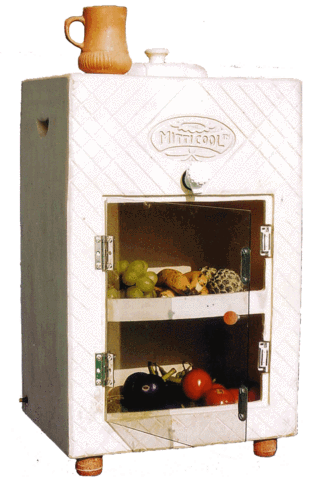 “A fridge for the common man that does not require electricity and keeps food fresh too. With this basic parameter in mind Mansukhbhai came up with Mitticool, a fridge made of clay.
“A fridge for the common man that does not require electricity and keeps food fresh too. With this basic parameter in mind Mansukhbhai came up with Mitticool, a fridge made of clay.
It works on the principle of evaporation. Water from the upper chambers drips down the side, and gets evaporated taking away heat from the inside , leaving the chambers cool.
The top upper chamber is used to store water. A small lid made from clay is provided on top. A small faucet tap is also provided at the front lower end of chamber to tap out the water for drinking use.
In the lower chamber, two shelves are provided to store the food material. The first shelf can be used for storing vegetables, fruits etc. and the second shelf can be used for storing milk etc. Cool and affordable, this clay refrigerator is a very good option to keep food, vegetables and even milk naturally fresh for days.”
MittiCool Refrigerator. Thanks for the tip, Joseph. See also:
Pottery Refrigerators
Ngo Practical Action is working with communities to make zeer pots – very clever fridges made using clay, water and sand. They consist of two earthenware pots of different sizes, placed one inside the other. The space between is filled with damp sand that’s kept moist by adding water, and the smaller pot is filled with food. The top is covered with a damp cloth, then as the water in the sand evaporates towards the outer surface of the larger pot, there’s a drop in temperature of several degrees. This keeps the contents of the smaller pot cool. A zeer pot can keep 10kg of food fresh for up to 20 days.
California Coolers
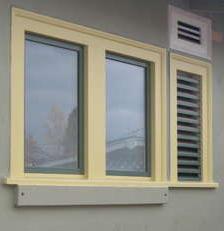 “Coastal Northern California is blessed with a very moderate climate, generally on the cool side, especially at night. Before the refrigerator became common in households, denizens of this region took advantage of the cool weather by storing perishable foods in a special kitchen cabinet that brought in air from the outside – the California Cooler.
“Coastal Northern California is blessed with a very moderate climate, generally on the cool side, especially at night. Before the refrigerator became common in households, denizens of this region took advantage of the cool weather by storing perishable foods in a special kitchen cabinet that brought in air from the outside – the California Cooler.
The cooler cabinets were designed to hold fruits, vegetables, and other staples that needed to be kept cool but didn’t need to take up critical space in the era’s tiny ice boxes. The coolers were open to the basement to draw in cool air, which then wafted up and out a chimney or a wall vent.
When the refrigerator came along, it seems that, over time, the vents were boarded up and the California Cooler was all but forgotten. Today, if you walk the streets of my hometown, Berkeley, where most of the houses were built in the 1920’s, you will see many homes, and even apartment buildings, with the exterior vestiges of these vents.”
Read more: Resurrecting the California Cooler. Thank you, Adriana. Previously: Saving food from the fridge.
